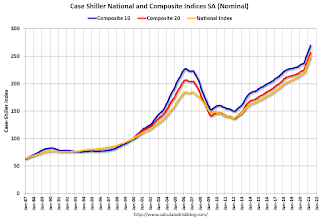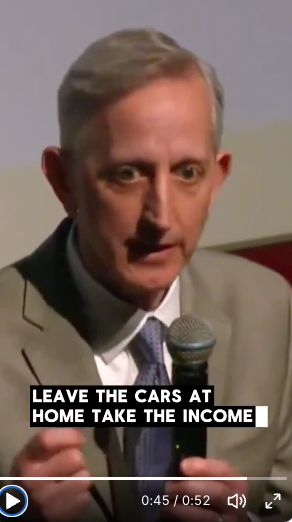What City Observatory did this week
1. The Texas Transportation Institute is back, and it’s still wrong about traffic congestion. Every year or so, a group of researchers at Texas A&M University produce report purporting to calculate the cost of congestion in US metro areas. Their flawed and biased methodology has been discredited multiple times, but the researchers continue to make unsupportable claims about alleged numbers of lost hours due to congestion. This year is a particular blown opportunity to make sense of the nature of our transportation problems because congestion went down virtually everywhere, by unprecedented amounts.
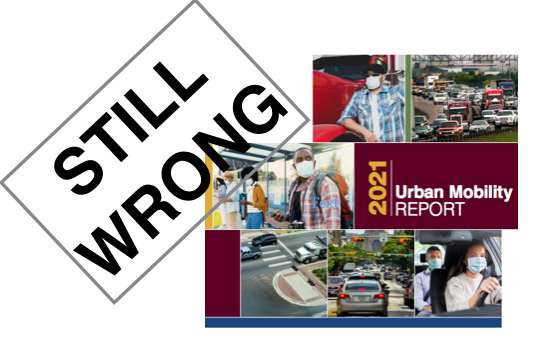 If you were researchers really interested in figuring out a way to reduce congestion, you would use this experience to figure out how to craft policies that mimic (minus the downsides) the traffic reducing effects of the pandemic. The experience of the pandemic shows that reducing traffic demand, which can be accomplished by road pricing, would be more effective and less costly that building new roads, but you’ll find no mention of “pricing” in the latest TTI report.
If you were researchers really interested in figuring out a way to reduce congestion, you would use this experience to figure out how to craft policies that mimic (minus the downsides) the traffic reducing effects of the pandemic. The experience of the pandemic shows that reducing traffic demand, which can be accomplished by road pricing, would be more effective and less costly that building new roads, but you’ll find no mention of “pricing” in the latest TTI report.
2. What’s behind the big run-up in home prices? Lower interest rates. In the past year, average home prices in the US have risen more than 14 percent according to the Case-Shiller index. There’s been widespread frenzy in the housing market, with bidding wars and a paucity of homes for sale. The decline in home mortgage interest rates is one of the key factors behind the increase in home prices. Mortgage rates have fallen roughly a full percentage point, from about 3.7 percent in early 2020 to 2.7 percent in early 2021.
Lower mortgage rates translate directly into greater ability to bid a higher amount for the purchase price of a home. The decline in rates enabled a household that could afford a $1,800 monthly mortgage payment to get a $340,000 mortgage, rather than just $300,000. That decline in interest rates is an important, but likely one-off stimulus to home prices.
Must read
1. Undercutting urbanism and transit with downzoning in Philadelphia. Here, in a nutshell, is America’s urban problem. As Plan Philly explains, the Philadelphia City Council just voted to impose a height limit of 38 feet on the city’s Girard Avenue, a street that has a major trolley line that connect to two of the city’s big subways.
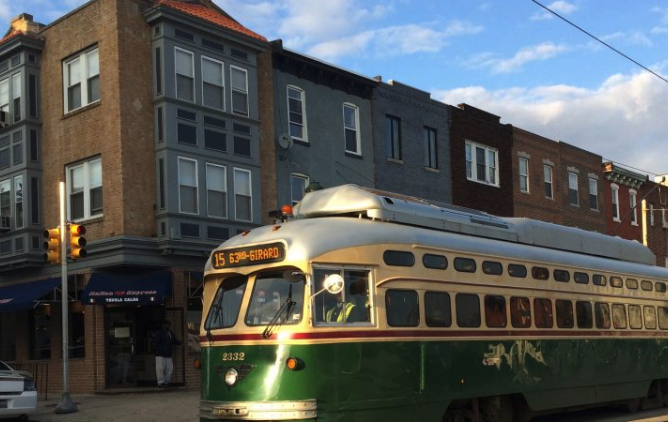
By limiting the size of homes than can be built on this street to three-story rowhouses, the city simultaneously worsens housing affordability, reduces transit ridership, and likely contributes to neighborhood displacement. We know that there’s a shortage of walkable, transit served locations, and transit ridership is directly proportional to neighborhood density. As Daniel Trubman pointed out, limiting density along Girard Avenue doesn’t reduce demand for housing. Instead, it simply displaces the demand to other parts of the neighborhood, likely driving up home prices and increasing displacement:
The strategy in every other Philadelphia neighborhood has been to upzone the major avenues. By downzoning everything, there will just be more impetus to buy and flip the individual houses.
The effort to protect desirable, transit-served neighborhoods from change with building restrictions, while politically popular, worsens housing affordability and undercuts efforts to promote transit ridership.
2. Remote work won’t save the “heartland.” There are widespread prognostications that with the advent of Zoom, there’s just no reason why businesses or workers who’ve mastered remote work won’t move away from expensive cities. If you can work from anywhere, why pay high rents? Mark Muro and his colleagues at Brookings Institution throw cold water on this thesis. They mine US Postal Service change of address data to examine the regional patterns of migration in the wake of the Covid driven work-at-home experience. They find that while there has been some movement outward from the most expensive superstar cities (New York, San Francisco, Seattle), precious little of that migration has produced population gains in the so-called “heartland (which they define as the states not on the Pacific or Atlantic coasts, plus Texas and the Rocky Mountains). 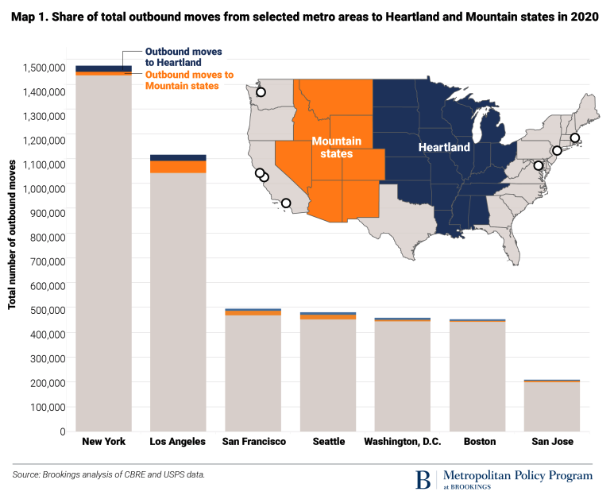
The reason: Most moves are local, either within the same metro area or state, or within the same region. Only a tiny fraction of moves from either coast are to the interior of the country, and Rocky Mountain states are doing better than the “heartland.” In addition, the Brookings analysts point out, remote work is declining rapidly as the pandemic ebbs.
3. A vision for sustainable, post-pandemic cities. San Francisco-based SPUR is a world leader in thinking about urban policies. This month, they have a short, timely and optimistic essay reminding us that done right, cities are the solution to many of our social and environmental challenges. “Greetings from 2070” tells us the California of the future became more just, sustainable, and livable by building more apartments, tearing out urban freeways, and systematically ending the use of fossil fuels. Denser, more affordable urban living with less driving, easier walking and cycling and better transit would enable us to build the kind of neighborhoods currently in short supply.
In the face of irrefutable daily evidence of climate chaos and in the wake of a devastating pandemic, projecting this kind of optimistic vision of a possible future is one key to moving us collectively in the right direction. We certainly will find it difficult to make any progress if we simply rely on the indefinite continuation of the trends and policies that got us to this situation.

